Pepot and the Archive: Cinephilia and the Archive Crisis of Philippine Cinema
Bliss Cua Lim / University of California, Irvine
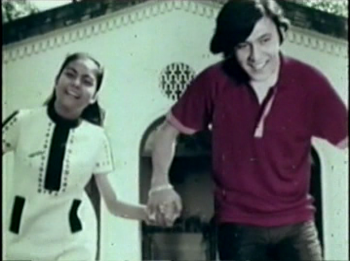
The lack of a national audiovisual archive—a problem rooted in a dearth of funding, a lack of political will, and the deterioration of archival storage formats—is a pressing question for Philippine film and media studies.1 Many important films are unavailable on VCD or DVD; in some cases, the last known prints or master negatives of canonical Filipino films are available only at the British Film Institute or the Cinémathèque Française. When no extant 35mm or 16mm prints survive, a poor-quality Betamax or VHS copy suffices; failing that, a lost film must be reconstructed through secondary sources alone.2
The only national audiovisual archive ever funded by the state, established by the Marcos government in 1981, was shuttered with the regime’s ouster in 1986. The Philippine Congress has since failed to pass a bill developing national print and audiovisual archives. The lack of a national audiovisual archive has resulted in “pockets of archives”, the most important of which is privately owned by television and cable corporation ABS-CBN.3
On my first visit to the ABS-CBN Film Archives in 2005, I was told that their holdings represented roughly 2,400 of the mere 3,000 titles that survive from the inception of Philippine cinema (some 8,000 films are estimated to have been produced locally since the cinematographic apparatus was introduced in 1897).4 Maintained for broadcast content, the ABS-CBN Film Archive is not a public research collection; special permissions are required for visiting scholars. The archive’s temperature-controlled vaults, designed to preserve access copies on broadcast-quality video for the medium term and film prints and master negatives for long term storage, represent the best archival conservation measures in the Philippines. Temperature controls are able to arrest, but cannot reverse, the degeneration of films previously subjected to improper storage in a tropical climate. Such limitations notwithstanding, the ABS-CBN film archive is presently the most significant bulwark against the encroaching loss of the majority of Philippine cinema.
The fragility of the Filipino audiovisual archive–much of it on video–is primarily a problem of media obsolescence.5 In the 1980s, deteriorating studio era classics were transferred to Betamax by Mike de Leon, a major director of the Philippine New Cinema and grandson of the LVN studio founder, Doña Narcisa “Sisang” de Leon.6 In some cases, these flickering Betamax tapes are now the last extant copies of lost LVN films, themselves objects of restoration on digital video.
Marita Sturken observes that analog video was never intended to be an archival medium. Video was designed to allow consumer recording of television’s simultaneous transmission, offering the immediate pleasure of instant replay.7 So the irony of Philippine cinema’s pocket archives, like others around the world, is that works in the older medium of celluloid were archived on video formats that were newer but also inherently ephemeral. In the Philippine context, then, film history was first preserved and is now endangered as videotape history. VHS, Betamax, and three-quarter inch U-matic tapes, as well as their respective playback technologies, are already archival artifacts as carefully preserved as celluloid.8 I vividly recall, on a visit to the short film archives of the Mowelfund Institute in 2005, seeing a roomful of old audiovisual equipment that had been cannibalized for parts to keep a single U-matic videocassette deck in working condition. Such archives are not only invaluable collections of media; they are also little “museums of obsolete technology,” in Alexander Stille’s apt phrase.9
Nor is the archival problem reducible to analog video. Given the short-lived nature of technological formats in an era of accelerating media obsolescence, Lucas Hilderbrand’s emphatic warning bears repeating: “digitization is not preservation.”10 Clay tablets and medieval parchment are more long wearing than modern acidic paper; black and white photographs are more stable over time than color photographs; the shelf life of celluloid motion pictures exceeds the twenty year lifespan of videotape, which is double the estimated decade-long stability of digital storage.11
In an age when media obsolescence is more recognizable than ever, the pressure of impending archival loss provokes a demand for historical reckoning. The Philippine archival situation is grim, but the response of historically-minded film buffs can sometimes take an inspired, playful form. This is the case for the campy period film Pepot Artista (Pepot the Movie Star, 2005), an independent digital film written and directed by Philippine film critic, historian, and archivist Clodualdo del Mundo, Jr.12
Pepot Artista recreates the movie-mad culture of the early 1970s, a milieu dominated by the superstardom of Nora Aunor (affectionately referred to as “Guy” by her fans) and Tirso Cruz III (nicknamed “Pip” by his devotees), who were romantically linked both on- and off-screen. The child protagonist Pepot (Elijah Castillo) is the impoverished moviegoer-as-dreamer: a little boy who sells komiks (comic book-sized movie magazines) on the street, Pepot dreams of emulating his screen idols: the action star Fernando Poe, Jr. (“FPJ”) and teen icons Guy and Pip.

Pepot’s story in the 1970s is framed by the retrospective voice-over narration of a present-day movie writer. As the Narrator (Noni Buencamino) realizes his lifelong dream of telling Pepot’s story, the film’s three-tiered structure, built on the motif of cinephilic dreaming, is laid bare. Pepot’s dream of superstardom and the Narrator’s dream of recounting Pepot’s tale parallel the filmmaker’s offscreen archival dreams: del Mundo’s important 2004 monograph, Dreaming of a National Audio-Visual Archive, had drawn attention to Philippine cinema’s archive crisis a year before the film’s release.13
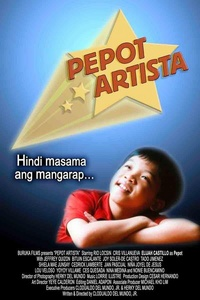
Archival footage is central to the film’s appeal. Excerpts from the Manuel Silos classic Biyaya ng Lupa (Blessings of the Land, 1959), the FPJ action flick Alas, Hari, at Sota (1971), and the Nora Aunor teen romance Lollipops and Roses (1971) address knowing film buffs while offering cinematic pedagogy for moviegoers who have never seen these films. Pepot’s contagious cinephilia, then, can evoke a longing for films one has never seen, initiating spectators into the popular pleasures of the archive. This, in fact, is the important work Pepot does for my own teaching of Philippine Cinema.14
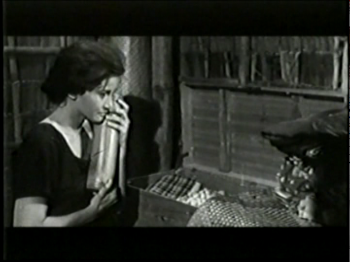
The joke of an early scene is that an unnamed motorist who buys a magazine about Guy and Pip is the actor Tirso Cruz III himself. The joke plays on deliberate anachronisms: the actor as he looks in 2005 makes an appearance in the diegetic world of the seventies, and archival footage of Guy and Pip as youthful matinee idols are juxtaposed alongside the visage of the older actor in the present day. Pepot’s buddy fails to recognize Pip, but Pepot and the offscreen spectator do. Pepot’s cross-generational, anachronistic gaze of recognition at Pip functions as an inside joke, both a cinephilic homage to pop icons and a self-reflexive jab at the film’s nostalgic recreation of the seventies.
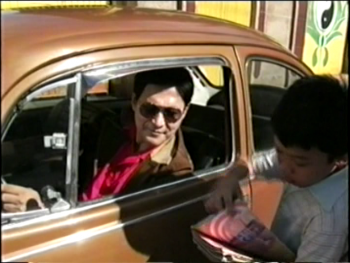


The interspersed footage from Guy and Pip (1971) features Maria Leonora Teresa, a three-foot-tall ceramic doll to whom the teen stars croon a hit ballad. Guy and Pip’s famous white “love child” is parodied in a later scene. Pepot fantasizes that he has been adopted by Guy and Pip impersonators; he joins their act, playing the transvestite part of their doll-daughter.
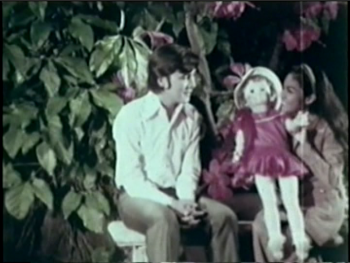

Pepot’s gendered and racialized impersonation of the inanimate blonde doll is also a form of temporal drag.15 Retrospectively inscribed onto the cross-dressing body of the young boy’s fandom is the foreknowledge that Nora Aunor’s gay male following would grow steadily in the years to come. In a kind of temporal condensation, the nostalgia of our own decade and a foreshadowing of 1980s films thematizing fandom are rear-projected onto Pepot, a queer child of the early seventies.

In the context of Philippine cinema’s fragile and fast-declining film and media archive, Pepot Artista’s inside jokes and archival footage fold the old into the new, enacting the survival of nearly-forgotten popular pleasures. Pepot’s wellspring is the affective archive of a filmmaker-preservationist, a fandom steeped in history.
My thanks to Vicky Belarmino and Mary del Pilar, both members of SOFIA, the Society of Filipino Archivists for Film. See http://dev.martinisantos.com/sofia/.
Image Credits:
1. Author Screencapture of Guy and Pip
2. Author Screencapture of Pepot Artista
3. Poster for Pepot Artista
4. Author Screencapture of Biyaya ng Lupa
5-7. Author Screencaptures of Pepot Artista
8. Author Screencapture of Guy and Pip
9. Author Screencapture of Pepot Artista
10. Author Screencapture of Himala
Please feel free to comment.
- See Clodualdo del Mundo, Jr.’s pioneering work on Philippine film archiving, Dreaming of a National Audio-Visual Archive, a SOFIA monograph for Ukay-Ukay: Where’s the Archive, a Festival of Restored Filipino Film Classics in Celebration of SOFIA’s 11th Anniversary, July 2004. [↩]
- A print of Manuel Conde’s 1952 Genghis Khan, shown at the Venice Film Festival, is at the Cinematheque Francaise; the British Film Institute holds the original negatives to Lino Brocka’s Maynila: Sa mga Kuko ng Liwanag (Manila In the Claws of Neon, 1975). See del Mundo, “Dreaming,” pp. 3-4. [↩]
- del Mundo, 12-13, 28. [↩]
- For a historical overview of Philippine cinema, see Nicanor Tiongson, “The Filipino Film Industry” East-West Film Journal 6.2 (July 1992): 23-61; and Bien Lumbera, “Philippine Film (1897-1992)” CCP Encyclopedia of Philippine Art vol. 8: Philippine Film (Cultural Center of the Philippines, 1994) 18-27. [↩]
- For a discussion of cinephilia and media obsolescence in relation to VHS and recent analog history, see Lucas Hilderbrand, Inherent Vice: Bootleg Histories of Videotape and Copyright (Durham: Duke University Press, 2009). [↩]
- Del Mundo writes, “There was no budget for telecine transfer, so [Mike de Leon] merely projected the films and recorded them off the screen with a Betamax camera and recorder. The improvised recording was not able to get rid of the flickering effect.” Del Mundo, 8-9. [↩]
- Marita Sturken, “Paradox in the Evolution of an Art Form: Great Expectations and the Making of a History,” Illuminating Video: An Essential Guide To Video Art. Ed. Doug Hall and Sally Jo Fifer (New York : Aperture in association with the Bay Area Video Coalition, 1990) 103-105, 120-121. [↩]
- U-matic is a three quarter inch videocassette format first marketed by Sony in 1971; a high-band broadcast U-matic format was introduced in the 1980s. Sony still markets this recordable format and the Library of Congress has significant U-matic holdings for access copies and proofs of copyright. [↩]
- Alexander Stille, “Are We Losing Our Memory? or The Museum of Obsolete Technology”, The Future of the Past (New York : Farrar, Straus and Giroux, 2002), 299. [↩]
- Hilderbrand, 21. [↩]
- Stille, 302. [↩]
- Pepot Artista won Best Picture and Best Editing in the Full-length film category of the 2005 Cinemalaya Philippine Independent Film Festival. It was completed within the shoestring budget permitted by the Cinemalaya Foundation’s seed grant of 500,000 pesos (about $10,000); such financial grants are awarded to 10 full-length feature films selected to compete in the Best Full-length film category of the festival. See http://www.cinemalaya.org/about_partners.htm [↩]
- See full citation for Clodualdo del Mundo, Jr., Dreaming of a National Audiovisual Archive, note 1 above. The narrator who revives a thirty-year old dream of telling Pepot’s story clearly functions as a diegetic alter-ego for director del Mundo himself: “The idea for Pepot Artista first lit up more than thirty years ago. In fact, it was Del Mundo’s first screenplay. ‘I did Pepot Artista during my tutorial course under Nestor Torre,’ shares Del Mundo. That was way back in 1971. He continues, ‘Pagkatapos, natabi lang siya. [Afterwards, it was put aside.] But it was one of the projects I really wanted to do.’ Meryll Yan, “Doy del Mundo: Debuting at 57,” http://www.pepotartista.com/director.html [↩]
- Course website available at: https://eee.uci.edu/10w/26207/. [↩]
- For a fascinating conceptualization of “temporal drag” in relation to queer temporality, see Elizabeth Freeman, “Packing History, Count(Er)Ing Generations.” New Literary History 31 (2000): 727-744. [↩]
Beautifully written – thanks for this. I have not seen the film but, in reading your article, it also reminds me of Davide Ferrario’s DOPO MEZZANOTTE (2004) – the similar cinephilic impulse in homage and recognition, the simultaneous pressures of rapid media obsolescence and nostalgia for the “old” technologies. I will be sure to watch this film!
I always enjoy learning from your scholarly but accessible pieces. They always verge on a call to action of some kind, but the economics and lack of resources always seem to get in the way… I am looking forward to the next 2 articles. Miss you lots.
Really loved the article Bliss! Knowing very little about subject matter, I’m very interested in seeing how the Phillipine cinema continues to grapple with preservation and access. I appreciated your highlighting the non-institutional ways a culture can preserve media, like in Pepot, and why such creative methods may help keep these films alive (even if they fade both literally and metaphorically from us). Seeking out alternative modes of preservation are not only essential, but as you pointed out, create something new, preserve the past, and stands a wonderful point of reference between these two spheres for scholars. This idea of the archive and reference (intertextual or otherwise) allows me to ponder how these nods can both be referential on a comedic level and yet deeper on a cultural, nationalistic recognition of their stories and art.
Great piece!
Dear Jenna, Chammy, and Racquel —
Thank you so much for these incredibly insightful and encouraging comments! These ideas are all pretty new “thought-experiments” for my next book project on Philippine cinema, Troubled Archive. I will definitely check out Dopo Mezzanote. And yes, I guess I am trying to both make a call to action and hold myself accountable to it as well, as best I can, by writing about films that might one day be accessed only through secondary sources. So the idea of creative, non-institutional, and perhaps primarily affective ways of ensuring these films’ “survival” goes to the very heart of what I’m trying to explore. Many many thanks for engaging with this piece!
Pingback: HIP HOP LIVES: Mega Manila styles! Revaluing Filipino popular culture « SariSari Sounds